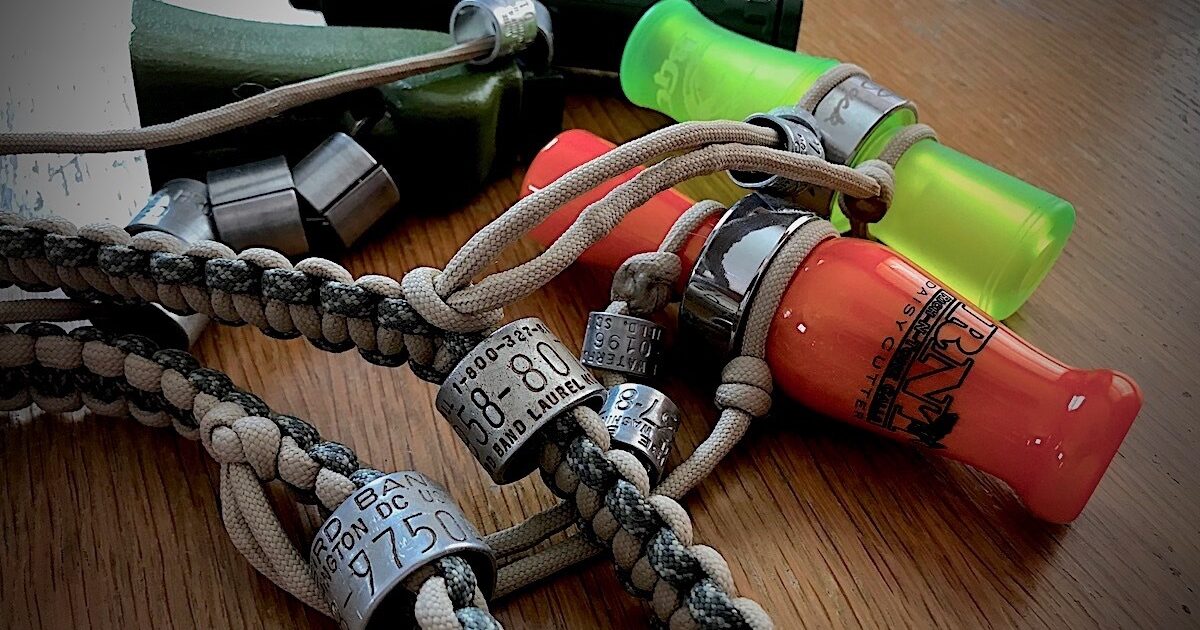
Image From Grand View Outdoors
Hunting for ducks and geese, or waterfowl hunting has been around for a while. In recent times, it has rose to great prominence in the hunting community, with the hunter always chasing that “Jewelry” or waterfowl that were captured by conservation or wildlife management groups and banded with a unique band. These Bands are made of aluminum and have a serial number non them that identify each bird, where they were banded at, and the date they were banded. These bands help identify harvest rates and migration patterns. It started in 1914 and has been going on ever since.
The reason why shooting a banded bird is special is two fold. One, you get to keep the band and put it on you call lanyard, showing off how great a hunter you are to all your partners. proving you successfully shot the rare banded bird. Two, you help conservation groups and wildlife management agencies build up information on the birds so sustainable limits and seasons can be more accurately set, because there is no other way to determine how many birds are shot each year other than reporting. Also, along the line of helping these groups and agencies, it also helps establish migration patterns and nesting habitats so they can be better protected. A band is much cheaper than a GPS system so more can be placed on the birds and more data can be recorded. In addition of helping those groups, some of the banded ducks come with Rewards. If you manage to get one of these birds you can report it and get a check for anywhere between 25 and 100 dollars. This reward system help increase the amount of birds that get reported from hunters.

While all bands are special and and are cherished by the hunters that take the birds wearing them, some are a little more difficult to obtain than others. For Example, There are some species of birds, such as the Hawaiian Goose, that have only ever had four bands recovered. Over 700 of these Hawaiian geese were banded. The odds of shooting one is extremely low, so the four hunters that did manage to get one can consider themselves very lucky. There are others that are much more common, such as the mallard duck, who has been banded over 7 million times, or the Canadian goose, who has been banded over 2.8 million times.
Each banded bird has a story, some more interesting than others. For example, one black duck was captured over 18 times in nine years. Another example is that of a pintail duck that was banded, and then 18 months later, the band was recovered form an alligators stomach. Another was documented to be harvested over 3,000 miles away from where it was banded.
So while the accomplishment of shooting banded bird is exciting just for collecting the “Jewelry”, it is also part of you doing your part to engage in the conservation process so future generations can set out every morning during the season to chase those bands.
I can just imagine how big of a deal it is to be able to shoot a particularly rare banded bird. I honestly know nothing about hunting– I really don’t. I didn’t even know that this was a thing. I knew that birds would be banded and recorded by various groups, but that’s all I thought there was to it. Do you have any of your own?
I never knew before this that this banding system even exists, but I can see why it would be so prized because of the achievement and how helpful it can be. I don’t know too much about hunting, but as in with most things, implementing some kind of reward system is very helpful, and in this case serves a meaningful cause as well. This seems like an aspect that makes hunting fun to participate in and is very intriguing.
I didn’t know about this system before. It seems smart and intriguing, where people band these birds for tracking purposes. I also think that the incentive of rewarding hunters is also smart, because it undoubtedly improves tracking records. I never would have guessed that this style of jewelry is popular in the hunting community, so it begs the question: How many do you have?
I can only imagine how exciting it is for a hunter to obtain a rare band like from the Hawaiian goose that you have mentioned. I definitely see the benefits that the bands could have for the wildlife management agencies and how it would be useful to be able to track the amount of birds that are shot each year. I never knew about how birds were banded before this post but it was informative and the reasons for them being banded are made clear.